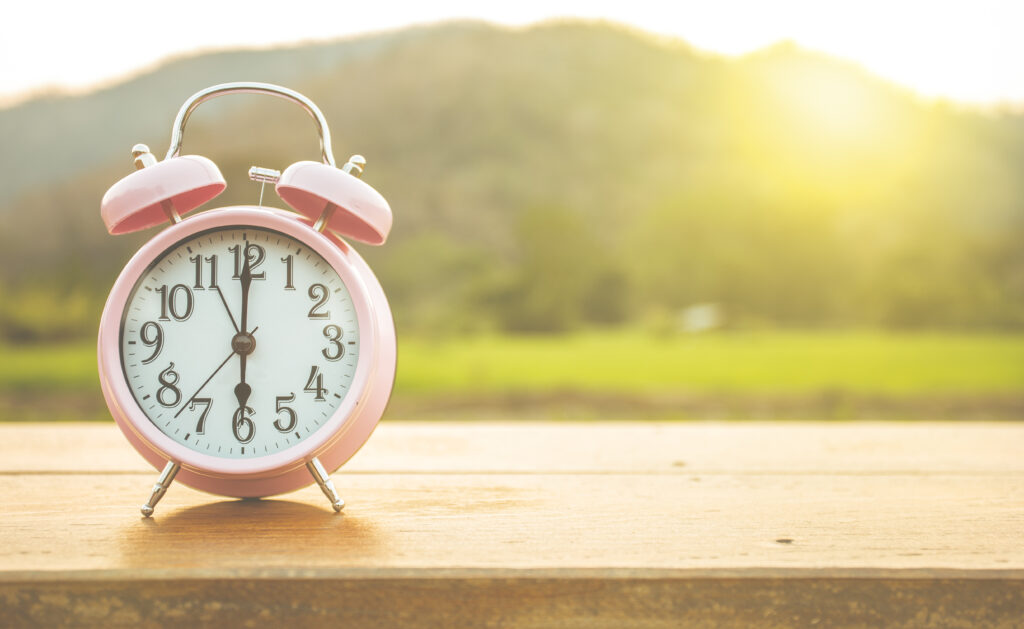The biannual ritual of changing our clocks is a subtle yet significant event that sparks nationwide discussions. For some, it hails the approach of longer, brighter evenings. For others, it signals the loss of a cherished hour of sleep. Regardless of how you view it, daylight saving time is sure to come around, and with it, a necessary adjustment in routine.
But fret not, for this isn’t merely about transferring one hour forward or backward; it’s about how you can harness this occasion to your advantage. Below, we unveil insights designed to help you acclimate to the time change seamlessly and emerge more energized, productive, and in sync with the seasonal shift.
Rethink Your Sleep Schedule
Daylight saving time’s most immediate impact is felt in the gentle disturbance of our sleep patterns. Moving the clock forward in spring means we’ll likely miss an hour of sleep, causing a ripple effect in our circadian rhythm. To counter this, consider gradually adjusting your bedtime by 15 minutes each night during the week leading up to the change. This will allow your body to adapt more smoothly and lessen the shock from the new timeline.
Optimize Your Environment
Light, as we know, plays a pivotal role in regulating our internal body clock. With the onset of longer days, maximizing your exposure to natural light is imperative, particularly in the mornings. Start your day with a brief stint outdoors or position your workspace near a sunlit window to help anchor your newfound morning routine.
Mind Your Mealtimes
The hours indicated by our clocks may change, but our hunger doesn’t adhere to a strict schedule. Be mindful of shifting your meal times accordingly, especially your dinner. Eating too close to bedtime can disrupt sleep, so you should consider having your evening meal earlier during the initial transition period.
Reevaluate Your Hydration
Staying well-hydrated is often overlooked in the context of time changes and their immediate effects. If you’re used to a morning coffee, for example, reconsider when you have it; a shift in sleep can compound the effects of caffeine. Equally, ensure you’re drinking enough water throughout the day to stay alert and aid in adjusting your body’s rhythms.
Exercise, but Not Too Late
Regular physical activity is a tool for maintaining energy levels and promoting good sleep. However, exercising too close to bedtime can have the opposite effect, making it harder to fall asleep. Try to schedule your workout earlier in the day, leaving a buffer of a few hours before turning in for the night.
Limit Device Usage
Technology, particularly screens, emits blue light that can disrupt melatonin production, the hormone responsible for signaling sleep. Consistently using devices with screens in the hour leading up to bedtime can prolong the time it takes to fall asleep. Consider a digital detox before bed a few days before the time change to condition your body for a better bedtime routine.
Sync with Natural Rhythms
While the clock does control our societal schedules, it’s important to remember that nature sets the broader cadence. Use the time change as a prompt to reassess how you structure your day. Are there tasks better suited for the morning’s fresh vigor or the evening’s reflective calm? Aligning your activities with the natural ebb and flow can magnify your productivity.
Reflect and Realign
Daylight saving time can serve as a natural checkpoint for introspection and goal setting. Use this shift to reflect on your current habits and consider what changes you’d like to make. Do you want to incorporate more mindfulness into your daily routine? Or are you aiming to pick up a new hobby that is more in tune with the available daylight? Set intentions for the season ahead and commit to small, actionable steps to get there.
By following these tips, you can transform daylight saving time from a disruption into a moment of personal optimization. It’s not just about managing the clock; it’s about finding harmony within the changes of time and the world around us. Your routine may alter by only an hour, but you can set the pace for a more luminous period ahead with the proper adjustments.
For more posts like this one, visit our blog.

